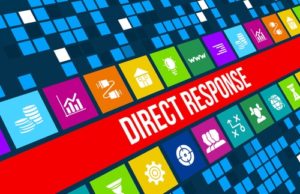7 Closely Held Creative Secrets of Direct Response Ads
 There’s no battle royale here. Contrary to some heated discussions I’ve heard, direct response and brand or name-recognition marketing are both valuable tools in any healthcare marketing plan. It’s not an all-or-nothing proposition.
There’s no battle royale here. Contrary to some heated discussions I’ve heard, direct response and brand or name-recognition marketing are both valuable tools in any healthcare marketing plan. It’s not an all-or-nothing proposition.
That said, direct response advertising—where immediate customer action is measurable—is really challenging, and success depends on creating effective advertising that works.
Be it print advertising, broadcast, outdoor or Internet marketing, inspiring a consumer to take the all-important action step is part art, part science and part professional talent and experience.
A Few Direct Response 101 Creative Secrets
What goes into an effective direct response ad? The recipe for success is complex, and if you’re struggling to find a starting point, or if you want to tune up your creative draft, the most important considerations are in the basics.
I shouldn’t be revealing these secrets, but:
The headline does the heavy lifting. As much as 80 percent of a direct response ad is the headline. Without a compelling and attention getting headline, the ad isn’t read and it’s an instant non-starter.
Communicate FABS. Your message will present Features, Advantages, Benefits and Super Benefits. The reader is wants to know: “What’s in this for me?”
Avoid puns and word play. Aside from some truly inspired exceptions, readers are far more engaged and motivated by strong benefits. If they struggle for a moment with understanding a “clever” word or expression, they’re gone.
Bribery works. Entice the reader with a free, low-cost or money-saving offer or benefit. Prospects are skeptical, but they resonate to an easy, low-risk test or sample.
Make the next step obvious and urgent. Clearly direct the reader to the call-to-action. Make it clear and specific. A deadline communicates urgency.
[bctt tweet="Clearly direct the reader to the call-to-action. Make it clear and specific. A deadline communicates urgency."]
Use active voice over passive voice. Active voice is often stronger and more direct than passive voice.
Words tell, but emotions sell. Individuals make purchase decisions largely because of an emotional connection and justify their actions rationally. Ads that touch human emotions are top performers.
The creative chemistry of direct response marketing and advertising also relies on experience, and the insight of knowing what works and what doesn’t work in healthcare.
There are about a million variables to consider, and it’s tough to get it right without professional help. We’re ready to give you a hand with that. Reach out to us today, and begin with a free marketing assessment.








